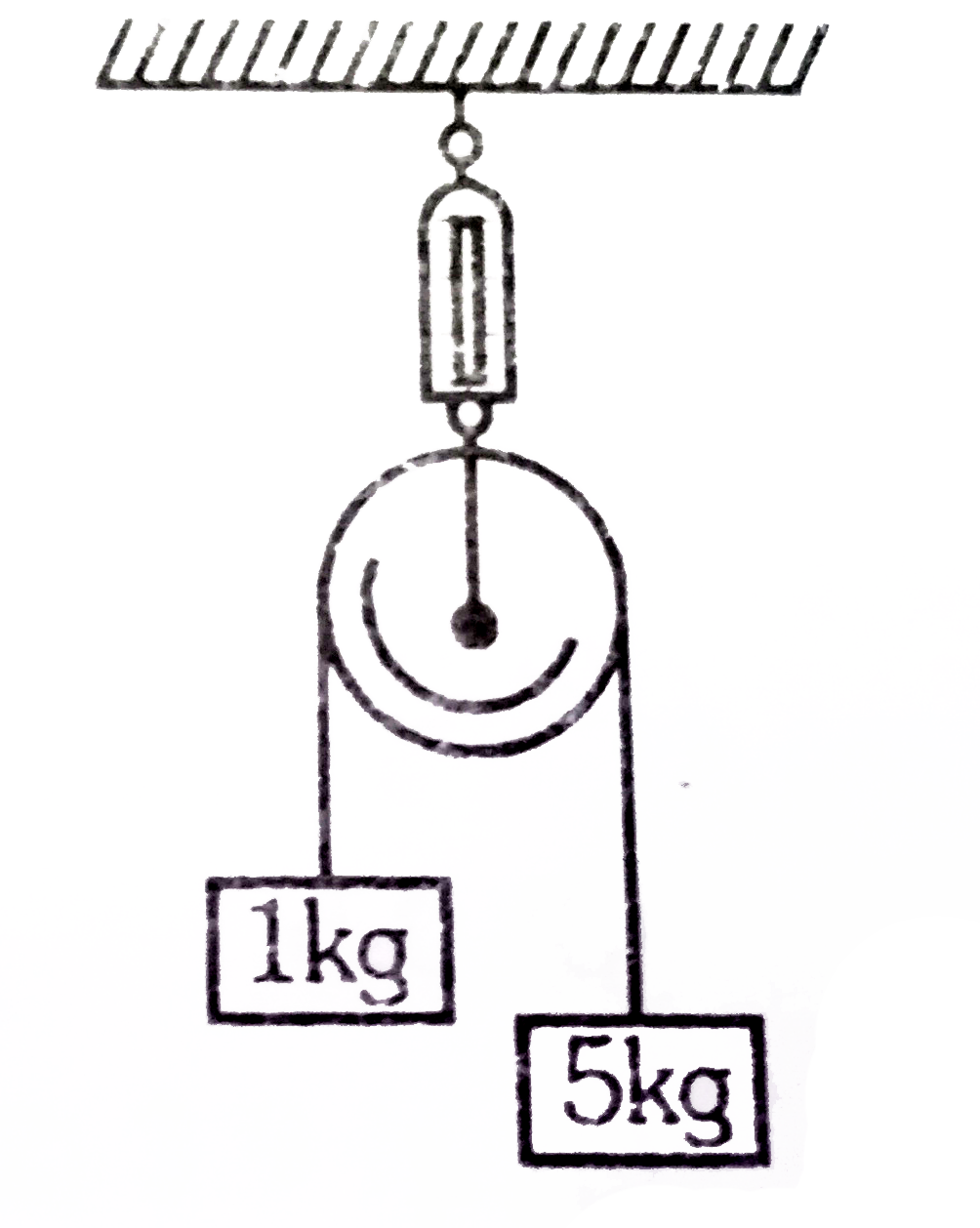When two spring balances joined at their free ends, are pulled apart, both show the same reading. Explain.
Step by step video & image solution for When two spring balances joined at their free ends, are pulled apart, both show the same reading. Explain. by Physics experts to help you in doubts & scoring excellent marks in Class 9 exams.
Updated on:21/07/2023Topper's Solved these Questions
- LAWS OF MOTIONBOOK - ICSECHAPTER - LAWS OF MOTIONEXERCISE - EXERCISE - 3(D) (Mutliple Choice type)
2 Videos
- LAWS OF MOTIONBOOK - ICSECHAPTER - LAWS OF MOTIONEXERCISE - EXERCISE - 3(D) (Numerical)
3 Videos
- LAWS OF MOTIONBOOK - ICSECHAPTER - LAWS OF MOTIONEXERCISE - EXERCISE - 3(C) (Numericals)
23 Videos
- ICSE ANNUAL EXAMINATION -2020BOOK - ICSECHAPTER - ICSE ANNUAL EXAMINATION -2020EXERCISE - SECTION-II
45 Videos
- LIGHTBOOK - ICSECHAPTER - LIGHTEXERCISE - TOPIC 2 Spherical Mirrors (4 Marks Questions )
9 Videos
Similar Questions
A body is suspended on a spring balance in a ship sailing along the equator with a speed v. Show that the scale reading will be very close to W0(1±2ωvg), where ω is the angular speed of the earth and W0 is the reading of spring balance when the ship is at rest. Explain the plus or minus sign
View Solution
Figure shows a 5 kg ladder hanging from a string that is connected with a ceiling and is having a spring balance connected in between. A boy of mass 25 kg is climbing up the ladder at acceleration 1ms2. Assuming the spring balance and the string to be massless and the spring to show a constant reading, the reading of thespring balance is: (Takeg=10ms2)
View Solution
Figure shows a 5 kg ladder hanging from a string that is connected with a ceiling and is having a spring balance connected in between. A boy of mass 25 kg is climbing up the ladder at acceleration 1ms2. Assuming the spring balance and the string to be massless and the spring to show a constant reading, the reading of thespring balance is: (Takeg=10ms2)
View SolutionTwo weights of 15ks each are attached by means of two strings to the two ends of a spring balance, as shown in the diagram. The pulleys are frictionless. The reading of the balance would be -

View SolutionFigure a) shows a spring of force constant k clamped rigidly at once end and a mass m attached to its free end. A force F applied at the free end stretches the spring. Figure b) shows the same spring with both ends free and attached to a mass m at either end. Each end of the spring in figure is stretched by the same force F.
(a) What is the maximum extension of the spring in the two cases ?
(b) If the mass in figure and the two masses in figure are released free, what is the period of oscillation in each case?

View SolutionFigure a) shows a spring of force constant k clamped rigidly at once end and a mass m attached to its free end. A force F applied at the free end stretches the spring. Figure b) shows the same spring with both ends free and attached to a mass m at either end. Each end of the spring in figure is stretched by the same force F.
(a) What is the maximum extension of the spring in the two cases ?
(b) If the mass in figure and the two masses in figure are released free, what is the period of oscillation in each case?

View SolutionAn object is suspended from a spring balance in a lift. The reading is 240 N when the lift is at rest. If the spring balance reading now change to 220N, then the lift is moving
View SolutionTwo masses of 1 kg and 5 kg are attached to the ends of a massless string passing over a pulley of negligible weight. The pulley itselt is attached to a light spring balance as shown in figure. The masses start moving during this interval, the readcing of spring balance will be-

View SolutionTwo masses of 1 kg and 5 kg are attached to the ends of a massless string passing over a pulley of negligible weight. The pulley itselt is attached to a light spring balance as shown in figure. The masses start moving during this interval, the readcing of spring balance will be-

View SolutionExplain the following: When two pins are hung by their heads from the same pole of a magnet, their pointed ends move apart.
View Solution
